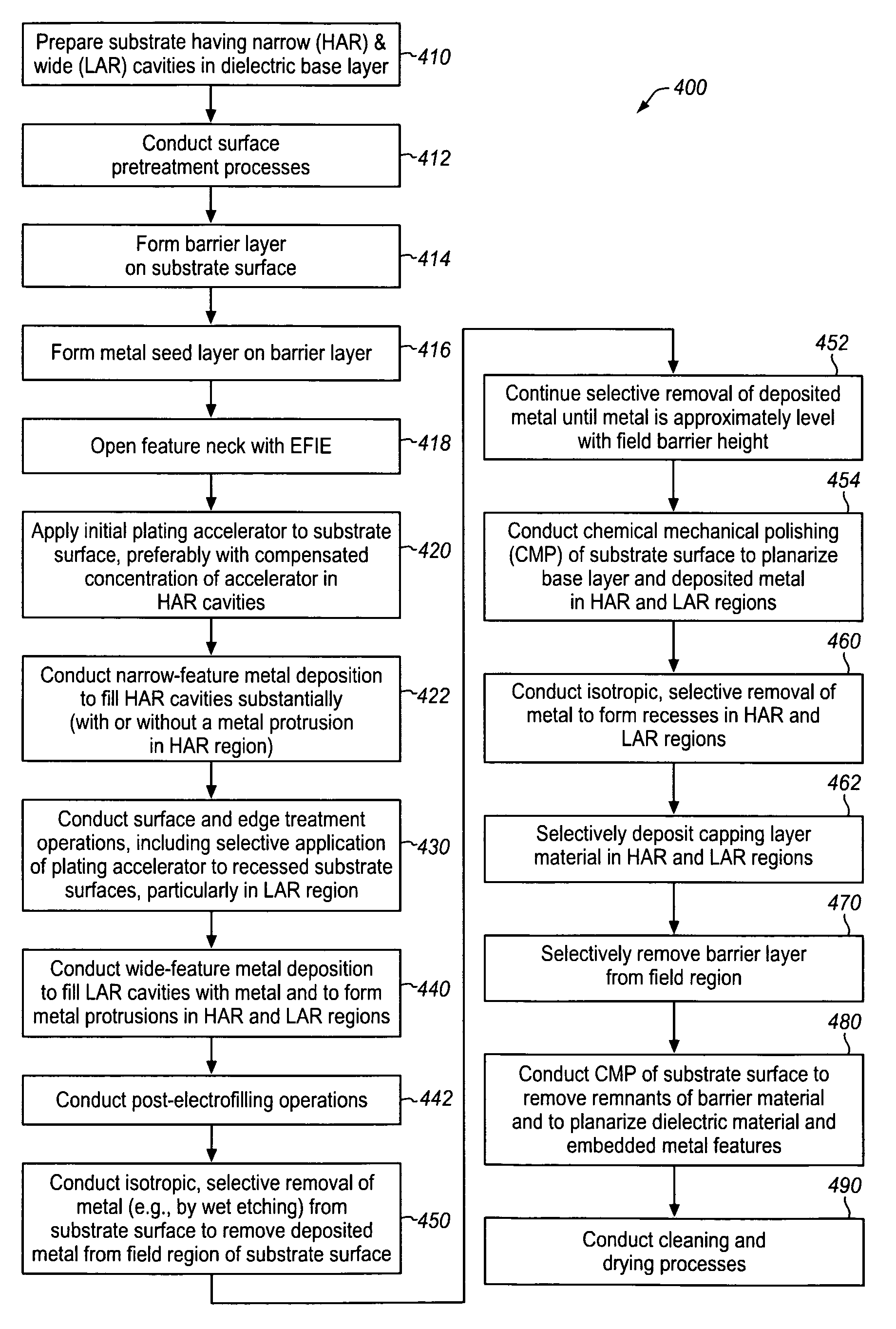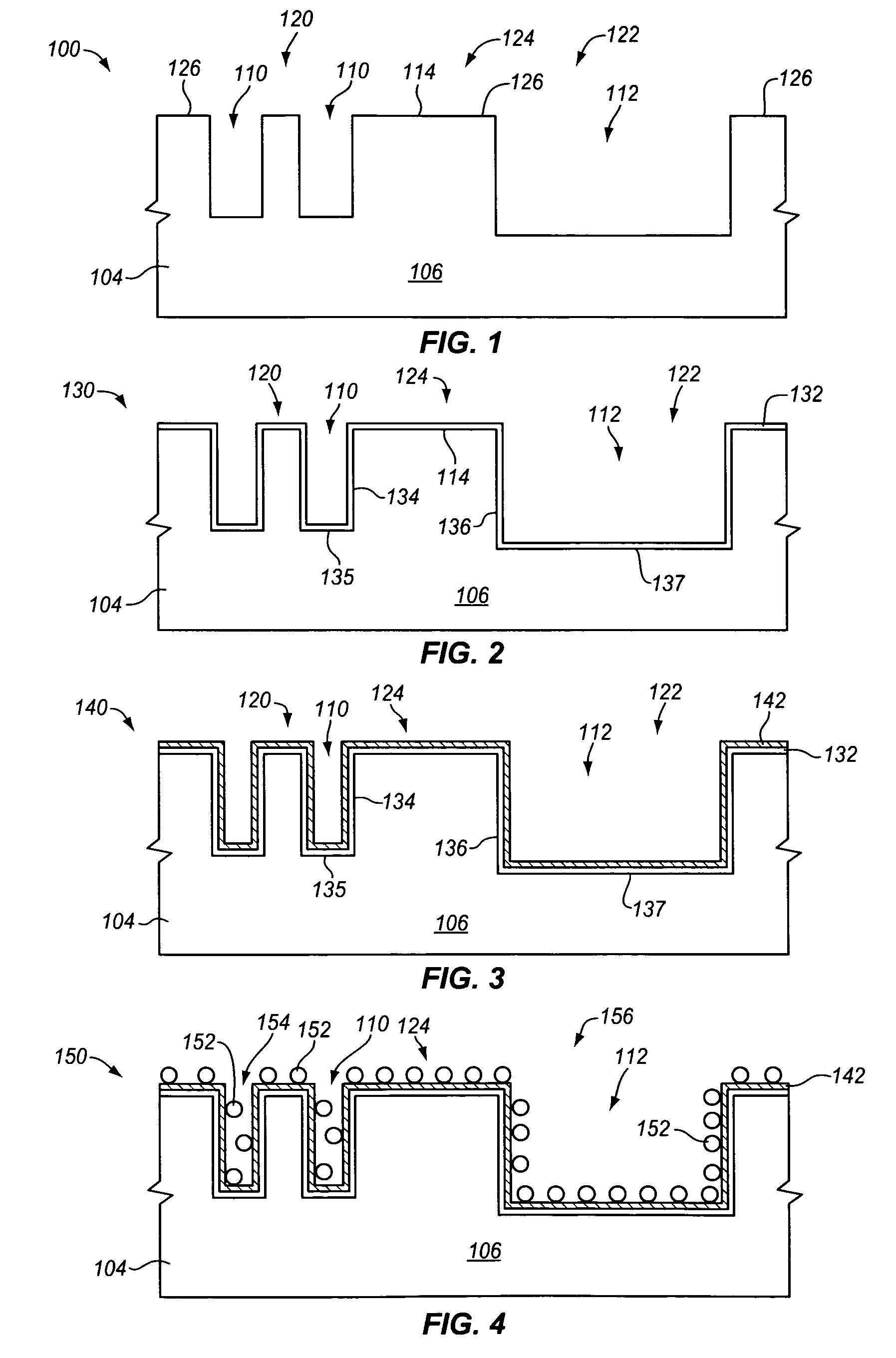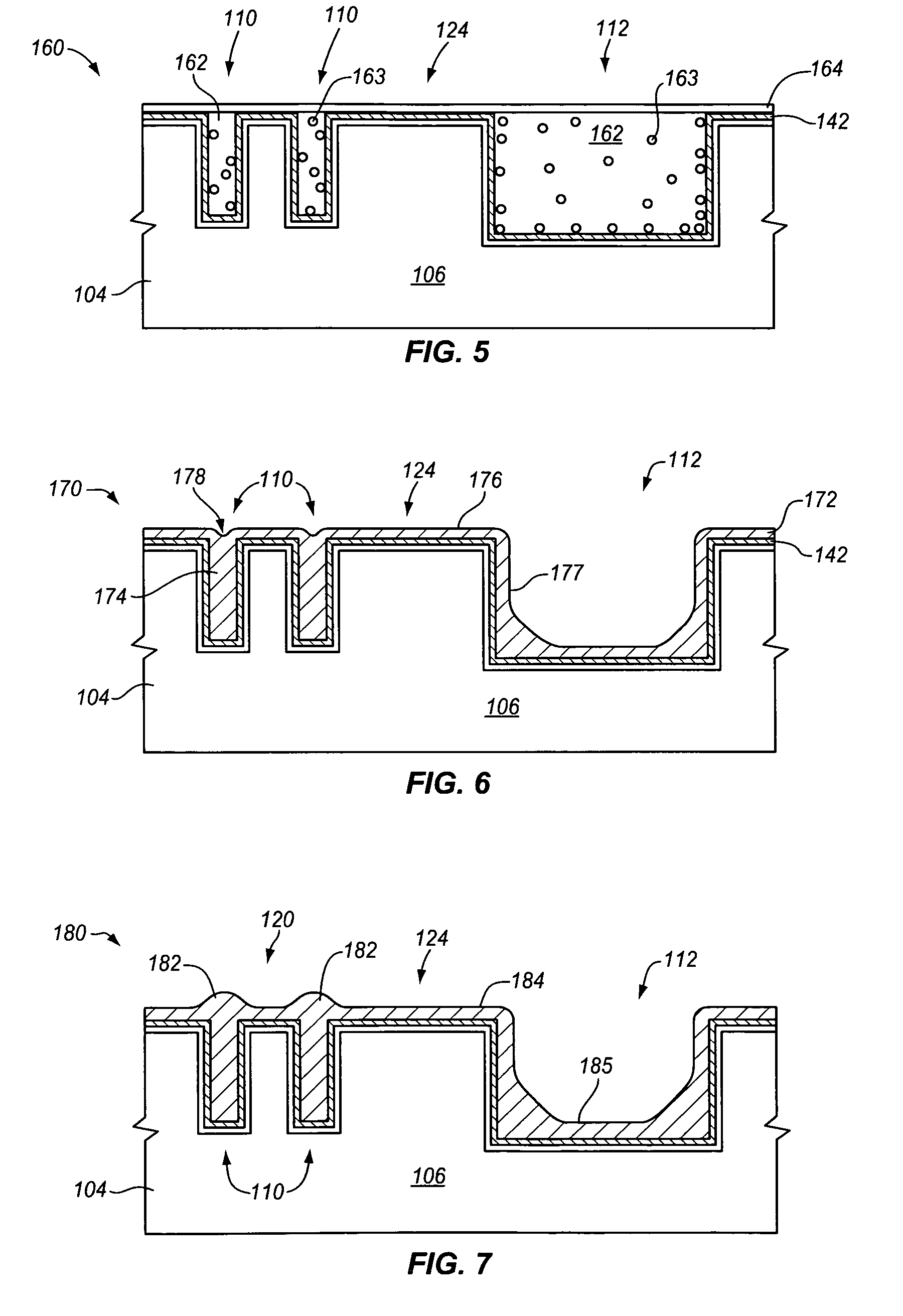Topography reduction and control by selective accelerator removal
a technology of selective accelerator removal and topography reduction, which is applied in the direction of resistive material coating, metallic material coating process, cable/conductor manufacturing, etc., can solve the problems of requiring the deposition of a large amount of excess copper that is essentially wasted, the topography is more rugged and complex, and the overburden is undesirable, so as to avoid dishing, erosion, scratching or other damage to metal and dielectric surfaces, and the effect of minimizing costs
- Summary
- Abstract
- Description
- Claims
- Application Information
AI Technical Summary
Benefits of technology
Problems solved by technology
Method used
Image
Examples
example 1
[0235]Accelerator removal tests were performed on a central section of a number of 300 mm thermal-oxide coated silicon wafers using an apparatus 800 as depicted in FIG. 39. Each silicon wafer had a 150 Å tantalum barrier / adhesion layer and a 1000 Å copper PVD seed. Each wafer was “pre-electroplated” in a SABRE® plating tool available from Novellus Systems, Inc. The pre-electroplating was performed at a charge density of 0.32 C / cm2. (at approximately 1200 Å) in a copper plating bath containing additives and electrolytes for filling 35 nm narrow-cavity features having an aspect ratio exceeding 4:1. The pre-plating step is useful for simulating and elucidating the abrasion interactions between a pad and the metal micro-topography and roughness that generally are present on a surface after a narrow-feature (HAR) metal deposition / filling operation. Prior to global accelerator application, the wafer was etched (etch rate about 1000 Å / min) to remove residual plating bath adsorbates / leveler...
example 2
[0260]Localized metal etching in accordance with the invention was performed to remove copper from a series of 200 mm semiconductor wafers using an etching solution in accordance with the invention together with a diluent (deionized water) or one of various quenching solutions. Liquid etchant was dispensed onto a wafer that was rotating at 500 rpm at a location about 50 mm from the wafer center. The liquid etchant was dispensed for 30 seconds at a flow rate of 40 milliliters per minute (ml / min) through an applicator nozzle having a diameter of 0.02 inches (0.51 mm). The etchant liquid comprised an etching solution containing 5 g / L of 30 weight percent (wt %) H2O2 and 4 g / L glycine. Concurrently, diluent or quenching liquid was dispensed for 30 seconds at a flow rate of 150 ml / min through a quench nozzle having a diameter of 0.03 inches (0.76 mm). The quench nozzle was located next to the etchant applicator nozzle, 0.43 inches (about 11 mm) radially outwards from the applicator nozzl...
example 3
[0262]A localized etching procedure in accordance with the invention was conducted to remove copper from 200 mm semiconductor wafers under conditions similar to those described above in Example 2 to demonstrate the effect of diluent flowrate on localized copper removal.
[0263]As in Example 2, liquid etchant was dispensed onto a wafer that was rotating at 500 rpm at a location about 50 mm from the wafer center. The liquid etchant was dispensed for 30 seconds at a flow rate of 40 ml / min through an applicator nozzle having a diameter of 0.02 inches (0.51 mm). The etchant liquid comprised an etching solution containing 5 g / L of 30 weight percent (% wt.) H2O2 and 4 g / L glycine. Concurrently, deionized water was dispensed for 30 seconds at a flow rate of 2700 ml / min through a quench nozzle having a diameter of 0.156 inches (4.0 mm). The quench nozzle was located next to the etchant applicator nozzle, 0.43 inches (about 11 mm) radially outwards from the applicator nozzle.
[0264]After applica...
PUM
 Login to View More
Login to View More Abstract
Description
Claims
Application Information
 Login to View More
Login to View More - R&D
- Intellectual Property
- Life Sciences
- Materials
- Tech Scout
- Unparalleled Data Quality
- Higher Quality Content
- 60% Fewer Hallucinations
Browse by: Latest US Patents, China's latest patents, Technical Efficacy Thesaurus, Application Domain, Technology Topic, Popular Technical Reports.
© 2025 PatSnap. All rights reserved.Legal|Privacy policy|Modern Slavery Act Transparency Statement|Sitemap|About US| Contact US: help@patsnap.com



